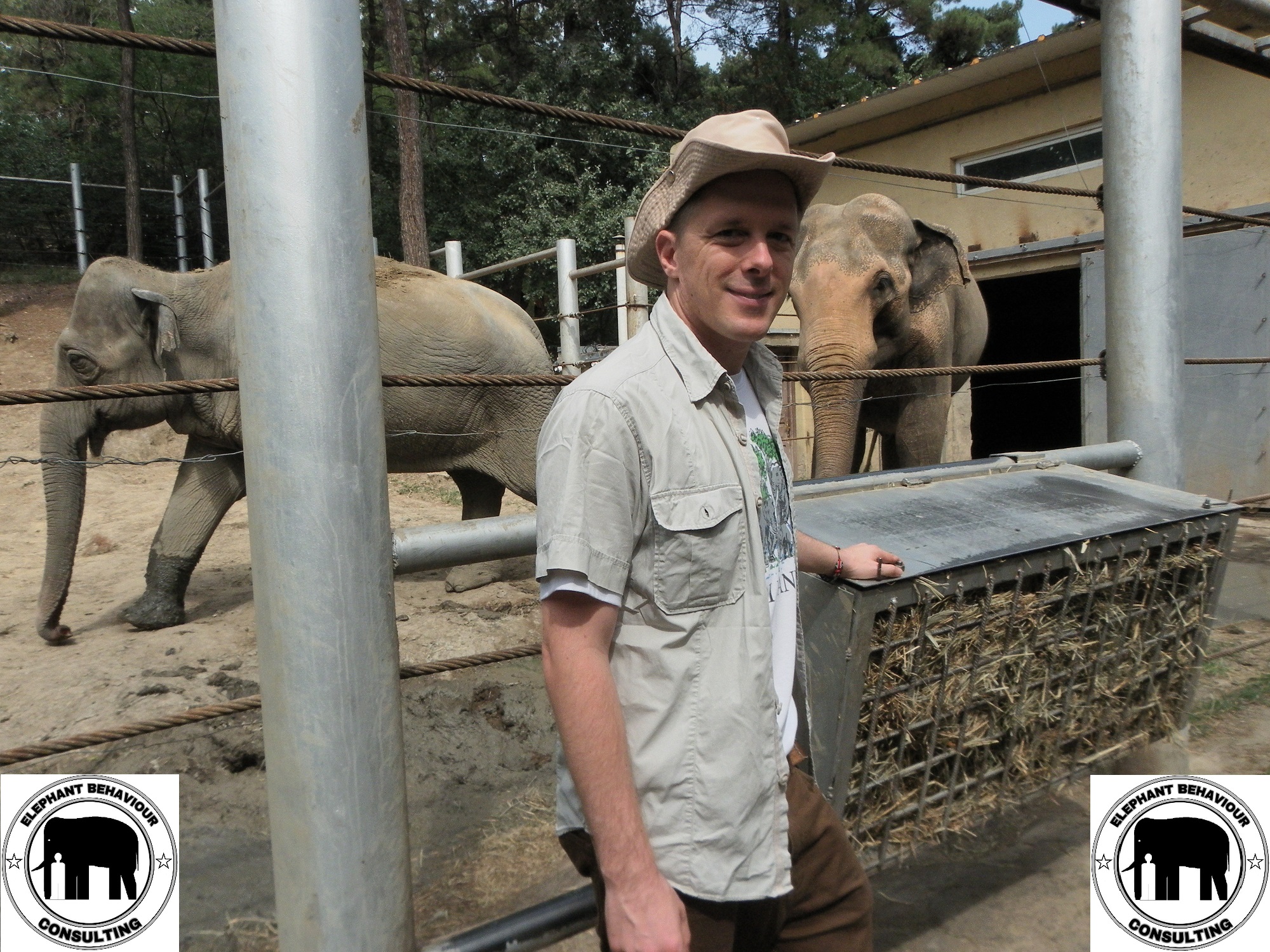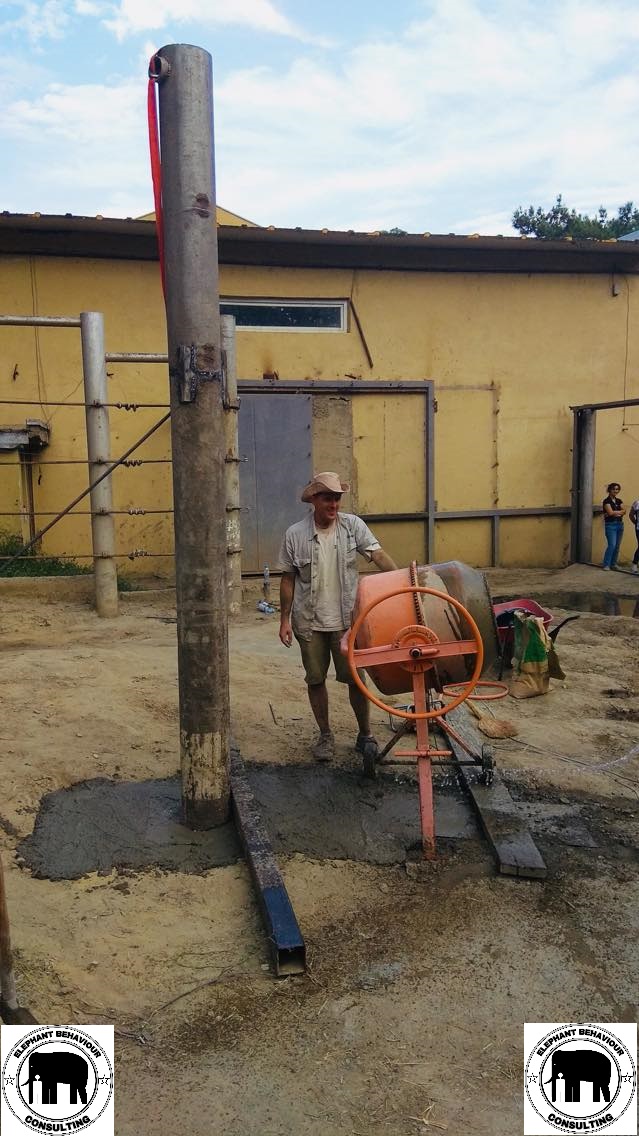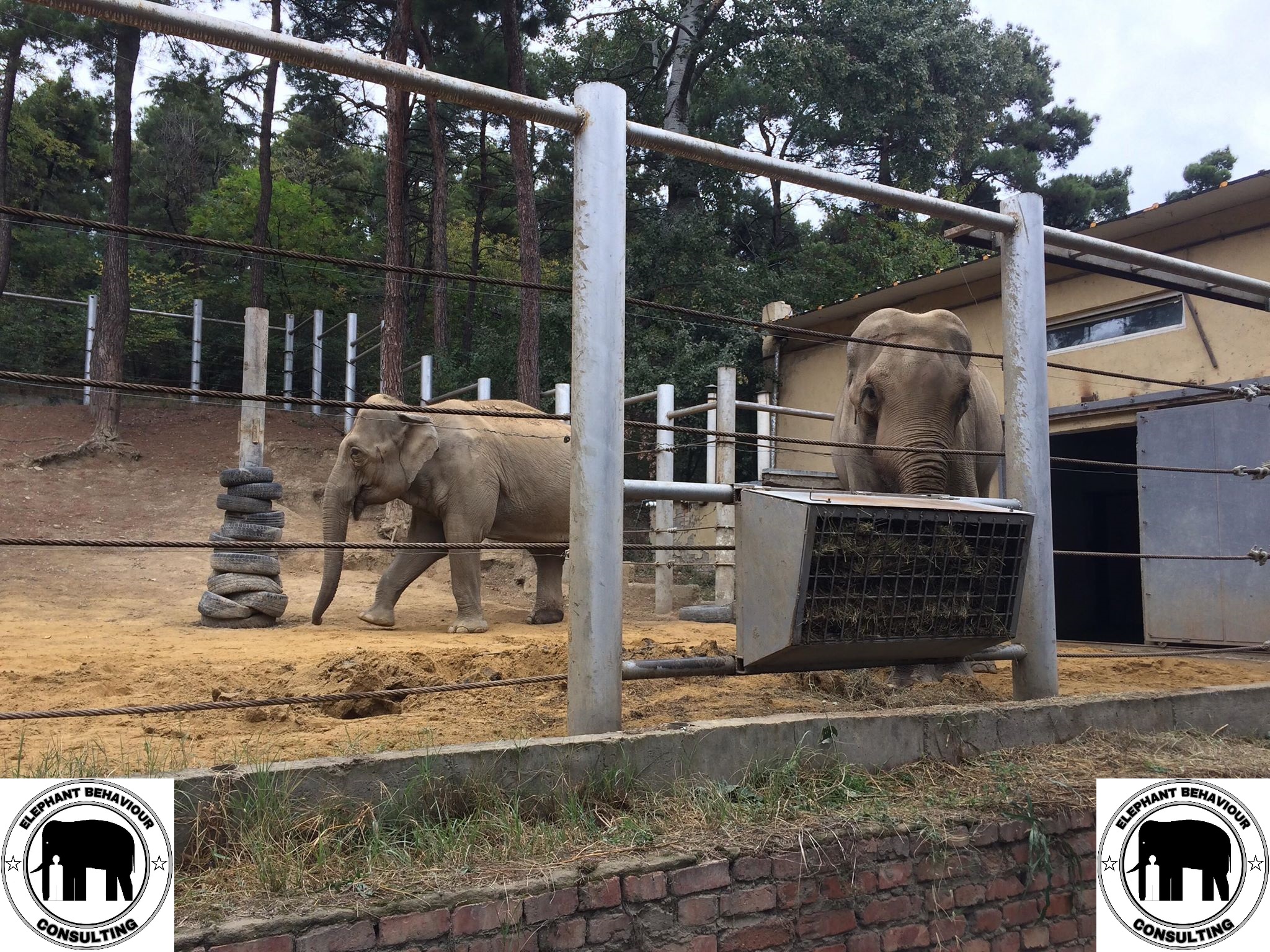Behavioural Enrichment
1. Different kinds of behavioural enrichment for elephants in zoos.

A Behavioural-Enrichment Study about Asian Elephants in Zoos.
Abstract:
The question of this study was: Have Enrichment programs a measurable, positive Effect on the behavior of elephants?
In order to identify the potential success of enrichment programs, I observated the elephant-bull called "Bunka" on different days with scientific methods and meticulous accuracy.
The first experiment was to feed the elephant-bull "Bunka" with fifty apples. On the first pass, the apples were fed on a pile (“old school”).
On the second pass, the apples were hidden everywhere in the enclosure.
The result: "Bunka" took three minutes to devour the fifty apples that were presented to him in a heap/pile. To search the apples in the enclosure and eat it took seven minutes and showed, in addition to the feed intake also search-behavior and locomotion.
The duration of feed intake was increased by more than 130%.
In another experiment, I have observed again the duration of feed intake (incl. seeking behavior). This time the elephant-bull called "Bunka" get about 10 kg of fruit and vegetables and some hay: Ten times with the conventional feeding method, where everything is available on a big pile on the floor. And ten times with the Enrichment Programm, that means hidden everywhere in the enclosure and hung in the hay net.
In feedings without enrichment programs "Bunka" needed about 17 min (minimal even only 12 mins) time for feed intake.
In feedings with Enichment programs "Bunka" needed about 51 minutes (maximum 71 minutes even) time for feed intake.
This results means that with the Enichment programs “Bunka” needed to increase the duration of feed intake by an average of 200%.
Conclusion:
Enrichment programs for elephants, especially by foraging, have an enormous importance for the behaviour of elephant (as close to nature as possible) and the welfare of elephants in zoos.
Orginal source:
DORNBUSCH, T. 2016. Enrichment-Programm im Zoo Yerevan. Elefanten in Zoo und Circus. Das Elefanten-Magazin 28: 63 – 65.
http://elephant-behaviour.com/data/documents/28_EnrichmentZooYerevan_2016.pdf
Building Enrichment:
Building Hay-Feeders for Elephants (see photos):
This Hay-Feeder is allmost finish, but he must be covered. Photo: T. Dornbusch , EBC.

The Elephants are happy about there Hay-Feeder(s). Photo: T. Dornbusch-Archiv.

In construction-progress: A artificial Enrichment-Tree for Elephants. Photo: Giorgi D.

One of the Elephants with there artificial Enrichment-Tree. Photo: T. Dornbusch.

The elephants with the one of the Hay-Feeder and the artificial Enrichment-Tree. Photo: T. Dornbusch.
(c) Copyright: DIpl.-Biol. Tobias Dornbusch, Elephant Behaviour COnsulting. 2012 - 2018.


